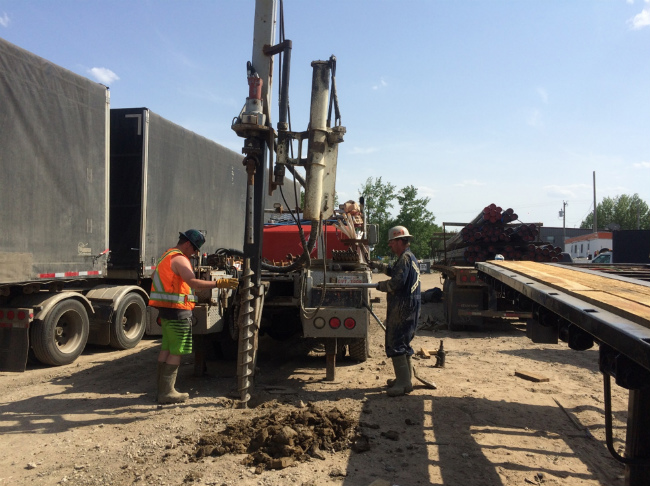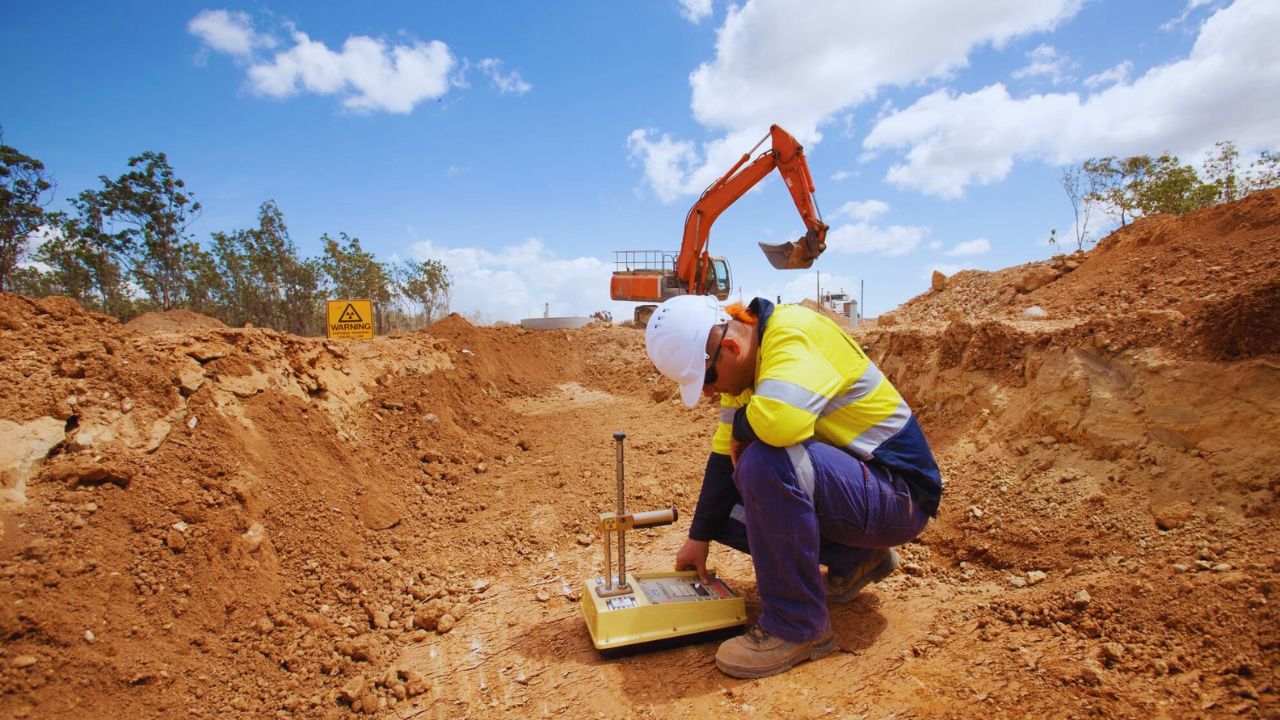Recognizing the Principles: Concerning Geotechnical Engineering in Modern Construction
Wiki Article
Discovering the Basic Concepts and Applications of Geotechnical Design for Sustainable Facilities Advancement
The intersection of geotechnical engineering and sustainable infrastructure development offers an engaging possibility to boost both layout efficiency and environmental obligation. By comprehending essential principles such as soil mechanics, website characterization, and structure layout strategies, designers can produce options that are not only effective yet also minimize eco-friendly impacts. Additionally, the integration of lasting techniques into geotechnical jobs questions about resource application and lasting strength. As we check out these ideas, the implications for future facilities tasks warrant mindful factor to consider, especially in an era significantly specified by environmental challenges.Secret Concepts of Geotechnical Design
Recognizing the essential principles of geotechnical design is vital for making lasting infrastructure (geotechnical specialist). This self-control concentrates on the communication in between soil, rock, and structures, playing an important duty in the security and efficiency of design tasks. The foremost principle is the assessment of subsurface conditions with site investigations, which supply beneficial details about soil properties, stratification, and groundwater levelsAn additional important principle is the application of effective anxiety theory, which assists engineers understand how soil behavior changes under differing lots. This understanding is critical for reviewing the bearing ability of structures and making certain that frameworks can withstand both static and vibrant pressures.
In addition, the concepts of soil-structure interaction and slope stability are integral to geotechnical design, as they inform decisions on the placement and layout of preserving walls, slopes, and embankments.
Finally, geotechnical designers should consider sustainability by advertising making use of in your area sourced products, reducing environmental effect, and maximizing styles for longevity. By adhering to these concepts, geotechnical engineering adds significantly to the production of durable and sustainable framework that satisfies the requirements of society while shielding the setting.
Dirt Mechanics and Its Value
Soil mechanics offers as the structure of geotechnical engineering, supplying the scientific concepts needed to assess the habits of soil under numerous conditions. Recognizing soil technicians is important for predicting just how soil will certainly reply to tons, adjustments in wetness web content, and other ecological elements. This expertise enables designers to design frameworks that can withstand the stress exerted by the soil and ensure security and safety.The research of soil technicians encompasses different facets, including dirt classification, shear stamina, leaks in the structure, and compressibility. These aspects affect the design of structures, preserving walls, and other geotechnical frameworks, making it vital to evaluate dirt properties precisely. The shear strength of soil directly influences the stability of excavations and inclines, while compressibility impacts settlement forecasts for structures.
Moreover, dirt mechanics plays a crucial duty in sustainable infrastructure advancement. By recognizing the soil's actions, designers can lessen ecological effects, maximize material use, and boost the longevity of frameworks. This assimilation of dirt auto mechanics into geotechnical engineering techniques not just makes certain security however also contributes to the overall sustainability of building jobs, promoting reliable resource monitoring and environmental stewardship.
Website Characterization Techniques
Effective website characterization techniques are crucial for collecting important details regarding subsurface problems prior to construction - about geotechnical engineering. These strategies supply valuable understandings right into soil residential or commercial properties, rock developments, groundwater levels, and prospective geohazards, thereby informing project design and mitigating dangersOne extensively employed technique is piercing, which allows for direct tasting of dirt and rock layers. This can be complemented by in-situ testing, such as Standard Penetration Examinations (SPT) and Cone Infiltration Tests (CPT), to examine dirt strength and stratification. Geophysical techniques, consisting of seismic refraction and electrical resistivity surveys, allow non-invasive analysis of subsurface materials and frameworks, offering a more comprehensive viewpoint on geological conditions.
In addition, lab testing plays a crucial role in examining dirt samples acquired from drilling. Examinations such as grain size analysis, Atterberg limits, and triaxial shear examinations produce essential information on soil behavior under different loading conditions.
Including these site characterization techniques not just improves the understanding of website problems but additionally supports sustainable infrastructure growth by making sure that projects are developed with suitable safety and security margins and performance requirements. Thus, a comprehensive website characterization is indispensable for notified decision-making in geotechnical engineering.
Structure Style Strategies
Foundation style strategies are necessary for making certain the stability and long life of structures in various geotechnical contexts. These strategies begin with a detailed site investigation, which consists of dirt testing and evaluation to figure out the physical buildings of the subsoil. Comprehending soil actions under load is vital for selecting the ideal structure kind, whether deep or superficial.Shallow structures, such as spread footings or floor covering structures, are typically utilized when suitable dirt layers are available near the surface area. Alternatively, deep foundations, such as heaps or pierced shafts, are used in situations where surface area soils are poor to support structural tons.

Lasting Practices in Geotechnical Design
The combination of sustainable practices in geotechnical engineering plays a critical role in enhancing the environmental and financial practicality of facilities jobs. By focusing on source performance and minimizing environmental influences, designers can add to the development of resilient infrastructure systems.One key sustainable technique includes the usage of alternate materials, such as recycled accumulations and commercial spin-offs, which can minimize the demand for virgin resources and reduced carbon emissions. Additionally, dirt stablizing strategies, consisting of the application of bioengineering methods, boost soil buildings while advertising eco-friendly balance.
In addition, the implementation of innovative geotechnical modeling and tracking technologies enables much better forecast and management of ground problems, causing optimized design options and resource application. These technologies additionally help with the analysis of long-term performance, ensuring that structures stay functional and risk-free over their life-span.

Final Thought
In conclusion, the concepts and applications of geotechnical engineering play a vital duty in lasting infrastructure growth. Highlighting dirt mechanics, website characterization, and ingenious structure design methods boosts the durability and efficiency of frameworks. The integration of lasting practices, consisting of the use of in your area sourced materials and progressed stabilization techniques, not just maximizes resource usage however likewise advertises ecological stewardship. Inevitably, these efforts add to the creation of facilities that successfully fulfills social requirements while lessening ecological influence.By recognizing crucial concepts such as soil technicians, website characterization, and foundation style techniques, designers can produce services that are not just effective but additionally decrease eco-friendly footprints.Soil mechanics serves as the foundation of geotechnical design, supplying the clinical principles needed to analyze the behavior of soil under various problems. Understanding soil technicians is crucial for predicting how dirt will certainly react to tons, modifications in moisture content, and various other ecological aspects.The research study of soil mechanics incorporates numerous elements, including soil category, shear toughness, compressibility, and permeability. These aspects influence the design of structures, maintaining walls, and various other geotechnical structures, making it important to assess dirt properties properly.
Report this wiki page